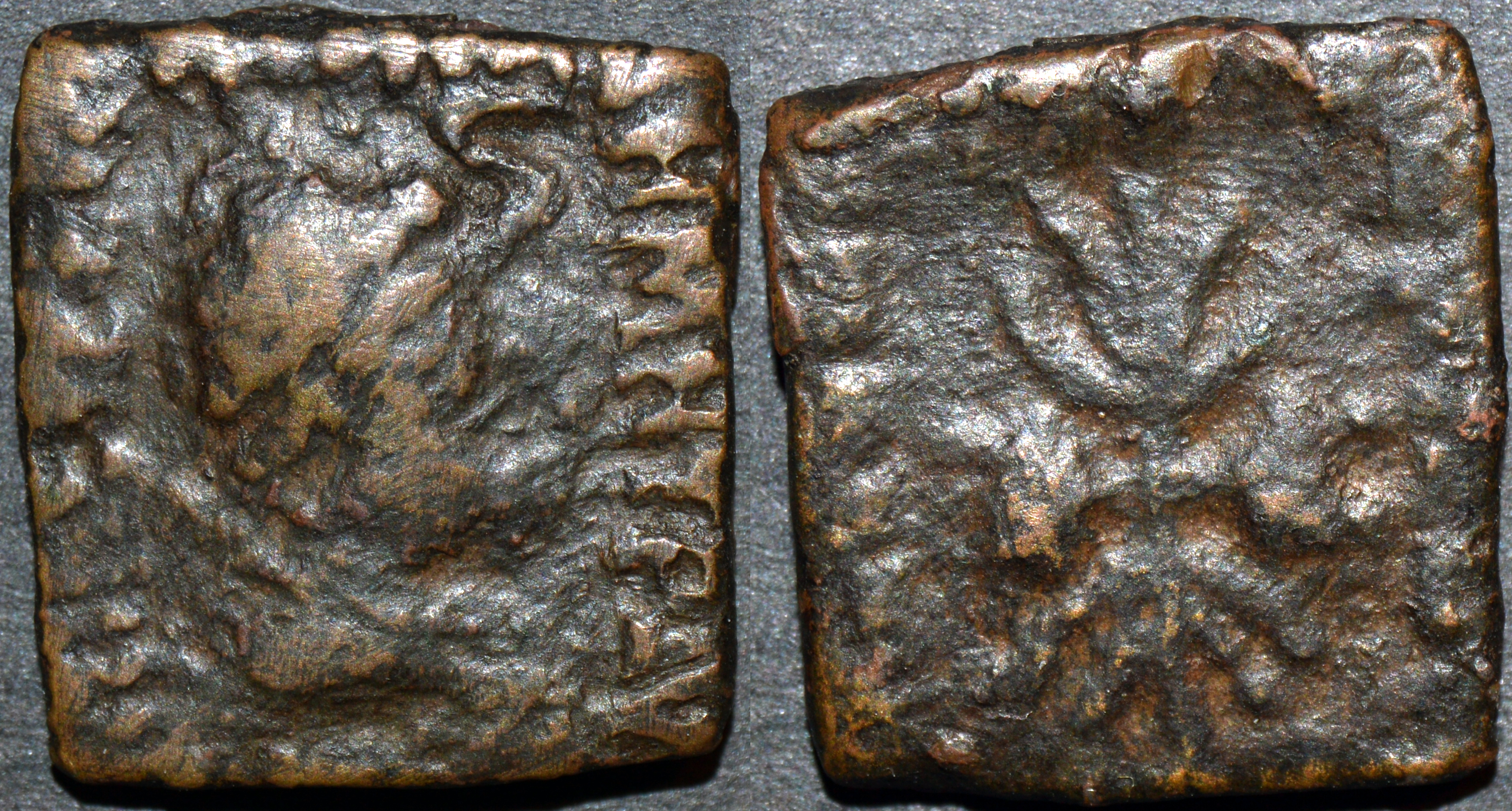
|
Demetrius (or Demetrios) III was another short-lived king His coins are all rare, and all carry the same monogram. Known
types are a silver tetradrachm, a silver drachm and a bronze quadruple. The silver coins carry a diademed, bare-headed bust of the king right and a
standing Zeus on the reverse, similar to the coins of Heliocles II. The bronze coins have a bust of the king wearing an elephant scalp head-dress and
a very unusual reverse: a winged fulmen or thunderbolt.
|
 |
Demetrios III |

|
Indo-Greek: Demetrios III, Bronze di-chalkon, c. 100 BCE
Weight: 4.51 gm., Dim: 20 x 20 mm., Die axis: 12 h
Bust of king facing right, wearing elephant scalp head-dress
Greek legend: BAΣIΛEΩΣ / ANIKHTOY / ΔHMHTPIOY
Winged fulmen or thunderbolt,
Kharoshthi legend: maharajasa / aparajitasa / dimetriyasa
(Photo, courtesy CNG) |

|
FORGERY OF Indo-Greek: Demetrios III, Bronze quadruple, c. 100 BCE
Weight: 5.40 gm., Dim: 17 x 19 mm., Die axis: 12 h
Bust of king facing right, wearing elephant scalp head-dress
Greek legend: BAΣIΛEΩΣ / ANIKHTOY / ΔHMHTPOY
Winged fulmen or thunderbolt,
Kharoshthi legend: maharajasa / aparajitasa / dimetriyasa |
 |
This coin is a carefully made forgery of the double of the previous type. There are several clues:
1. The weight is too low (5.39 gm) for the type (it should be around 8+ gm).
2. The bust of the king has an object on the right shoulder which should not be present on a coin of Demetrius III.
3. Looking at the coin under high magnification, one can see how it has been carved out in places: the elephant's trunk
and the king's name on the obverse, and around the fulmen on the reverse.
4. The king's name has been mis-spelled ΔHMHTPOY instead of ΔHMHTPIOY.
The coin, I believe, was originally a coin of Antialkidas (Bopearachchi 17). An example can be seen
here. This explains the object on the shoulder of the king.
The original depicted a bust of Zeus with a fulmen on his shoulder. The elephant's trunk has been carved out, as has the king's name. The reverse was originally
the caps of the Dioscuri and palms. That explains the two knobs of metal at 3 o'clock and 9 o'clock of the fulmen ... these were the caps.
The field around has been carved down to produce the bolts of lightning, which incorporate the palms. Note that there is no monogram, as
there should be; the monogram or monograms on the original coin were carved away to accommodate the lower part of the fulmen. The
extensive carving to create new details explains the low weight of the coin.
|
|
|